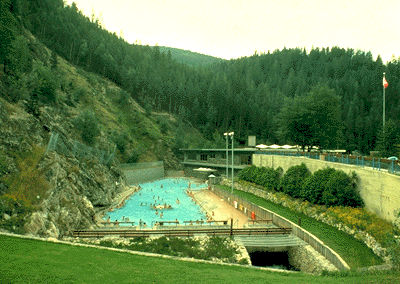
Fundy National Park (established 1948, 205.9 km2), renowned for its high tides averaging 9 m, stretches for 13 km along the Bay of Fundy and extends inland where wooded hills are cut by deep valleys and tumbling streams.
Natural History
The park's seaward edge features wave-pounded cliffs and cobble beaches. At low tide barnacles, crabs and a host of other marine invertebrates can be found among the rocks and seaweed. In late summer, flocks of migrating shorebirds congregate on the nearby tidal flats.
The spruce-fir coastal forest and birch-maple forests inland provide habitat for white-tailed deer, moose, raccoon, black bear, beaver and bobcat. Coyotes are recent immigrants to the park. Marten, peregrine falcons and Atlantic salmon, all once residents of the park area, have been reintroduced.
Human History
In the 1800s lumbering and shipbuilding were major activities of Irish and English settlers.
Facilities
The park has 4 vehicle-accessible campgrounds, cabins and a small motel. Interpretive activities guide people down the beach and through the forest, and there is an extensive hiking trail system.

 Share on Facebook
Share on Facebook Share on X
Share on X Share by Email
Share by Email Share on Google Classroom
Share on Google Classroom


